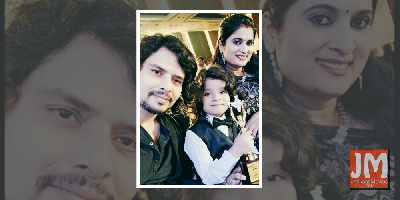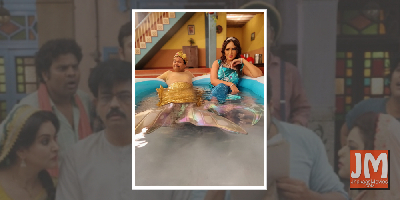 Aan Tiwari honoured with Best Child Actor award for Baal Shiv
Aan Tiwari honoured with Best Child Actor award for Baal Shiv Ghategi rahasymayi ghatnaye!
Ghategi rahasymayi ghatnaye! Amazon Prime Video unveils the 2021 Festive Line-up; brings a heady mix of Indian and International titles on the service
Amazon Prime Video unveils the 2021 Festive Line-up; brings a heady mix of Indian and International titles on the service Release: Music video of, Yeh Haalaath, from Mumbai Diaries 26-11
Release: Music video of, Yeh Haalaath, from Mumbai Diaries 26-11 Bhumi Pednekar feels she shares feel-good value with Akshay Kumar on screen
Bhumi Pednekar feels she shares feel-good value with Akshay Kumar on screen
Cinematograph Act: Inane amendments (Column: B-Town)

BY VINOD MIRANI
In India for all the laws we need as far as our field of cinema is concerned, we have the Cinematograph Act (1952), an almost 70-year-old Act that has not been amended or scrapped, and re-enacted in time to keep up with the changing time. The Act has been amended a couple of times but not effectively enough.
The problem, as it arose over time, was that its scope was limited to cinema exhibition, for which it was mandatory for a filmmaker to get his film approved by the Central Board of Film Certification (CBFC), earlier named Central Board of Film Censors. The Board's job was to determine if a film was worthy of public exhibition and, if it was, who all could see it. Hence, the films were rated A (adult viewing) and U (universal viewing), besides an S category that was granted to special purpose movies meant for professions in various fields.
Actually, the Cinematograph Act was introduced by the British Raj in 1920, a few years after India started making feature films for public exhibition. The idea was to keep check on films that could propagate anti-British thoughts or provoke the masses.
Independent India created its own censorship in 1952. The idea was the same -- keeping check on what people were exposed to through the mass media of films. The government wanted to play the moral guardian of the people! The films being made during the initial years of filmmaking were simplistic, based mostly on history, mythology and such, and how and why the Brits thought they needed to be censored beats one. The rulers of Independent India carried on with the Raj mentality and resulted in the enaction of censorship.
Like I said, we may have all the laws but what is lacking is implementation. Save for some reputed cinema managements in metros like Mumbai, Delhi etc, the U and A rating meant nothing. All films were universal and open to all. So much for censorship. As a film reached the interiors of the country, a film's scenes got bolder. Interpolation of porn film cuttings making a romantic scene meant something else altogether.
Through the years, the Censors have only been used as a handle to control the film industry, arm-twist the producers.
But, right under the nose of the Information and Broadcasting Ministry of the Government of India, the very scope of the Cinematograph Act has changed. The ministry has been oblivious to the fact that films are no longer the only source of mass entertainment anymore. First television and then the video format, and then the internet. The entertainment industry did not remain exclusive to films. New mediums of entertainment were taking shape all over the world and in India. Digital was the word.
The OTT streaming platforms followed. Television did bring entertainment home but had limitations of choice, timings and such. In contrast, OTT not only sanctioned local content production to cater to the various tastes, it also opened access to entertainment from all over the world. There is no limit to what the OTT platforms can offer.
Once television was complemented by video, there was no control, Cable operators boldly showed porn films at night, often on demand. Doordarshan telecast what was certified as Adult films 11 pm onwards! It was the Rulers' view that the kids went to sleep before that and elders were free to watch these films. There was also a way around for regular commercial films that were granted A certificate and therefore could not be telecast on Doordarshan after the theatrical run. The producer would take such a film for recertification after deleting the objectionable parts and get a U certificate, so it could comply with the terms of telecast.
It was all very funny! Strangely enough, a film certified in South by the Regional Board office was found objectionable when dubbed in Hindi. Come to think of it, the whole censoring of films is a red tape.
Over the past few years, OTT platforms have been streaming content unhindered. Not porn, not vulgar, but some content go beyond that in depicting gore and violence and vulgarity unabated. The Government had no clue what to do about it nor how to check this free run.
As OTT platforms have also opened windows to content from all over the world, which is not subject to India standards of morality (as assumed by the Censors), why not reserve the same treatment for Indian content? The proposals drawn up by the Ministry a few months ago at regulating OTT content was called Toothless by the Supreme Court of India.
Instead of doing something about these streaming platforms, the Government has decided to further tighten the screws on Indian cinema.
According to a new draft proposal, the CBFC will have the power to recall a film already certified and screened at cinemas all over. Does that mean CBFC's certification the first time around is not binding? According to a court ruling some years ago, once a film was censored it could not be challenged except under certain circumstances (that too by a local administrator of a district).
The law is amended now, and the Government gives power to the CBFC to recall a film if the content is against Public Order!
What is the definition of Public Order? Does it mean the Censor is not capable of judging such content the first time?
In India, such a vast country that we are, the smallest of things or political provocation can cause a Public Order ("PK" for example) and films are often used as an excuse. What is more, here a film creates a Public Order even before it is released publicly, the examples are aplenty in films like "Goliyon Ki Rasleela Ram-leela", "Padmaavat" and "Manikarnika".
Recalling a film is disastrous for the film. A break in a film's theatrical run, if withdrawn, kills its box office potential, as it happened with "Bandit Queen". The film was based on the life of bandit queen Phoolan Devi. After the release, she objected to the way her character was portrayed. After cash settlement, when the film was re-released, it had no takers.
The new censor ratings are nothing but ridiculous. U/A7+ means suitable for age seven and above, and U/A 14 means suitable for 14 and above. So, what does a seven-plus do, carry a letter of consent from the parents? Or will the child be allowed only if a parent accompanies him or her? Most of all, who makes films keeping a seven-year and 14-year-old in mind? These amendments to the Cinematograph Act are getting sillier each time.
(Vinod Mirani is a veteran film writer and box office analyst. The views expressed are personal)
Tags: Cinema, Showbiz, Lifestyle, Fashion, Quote Unquote








